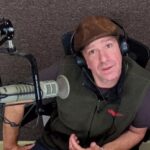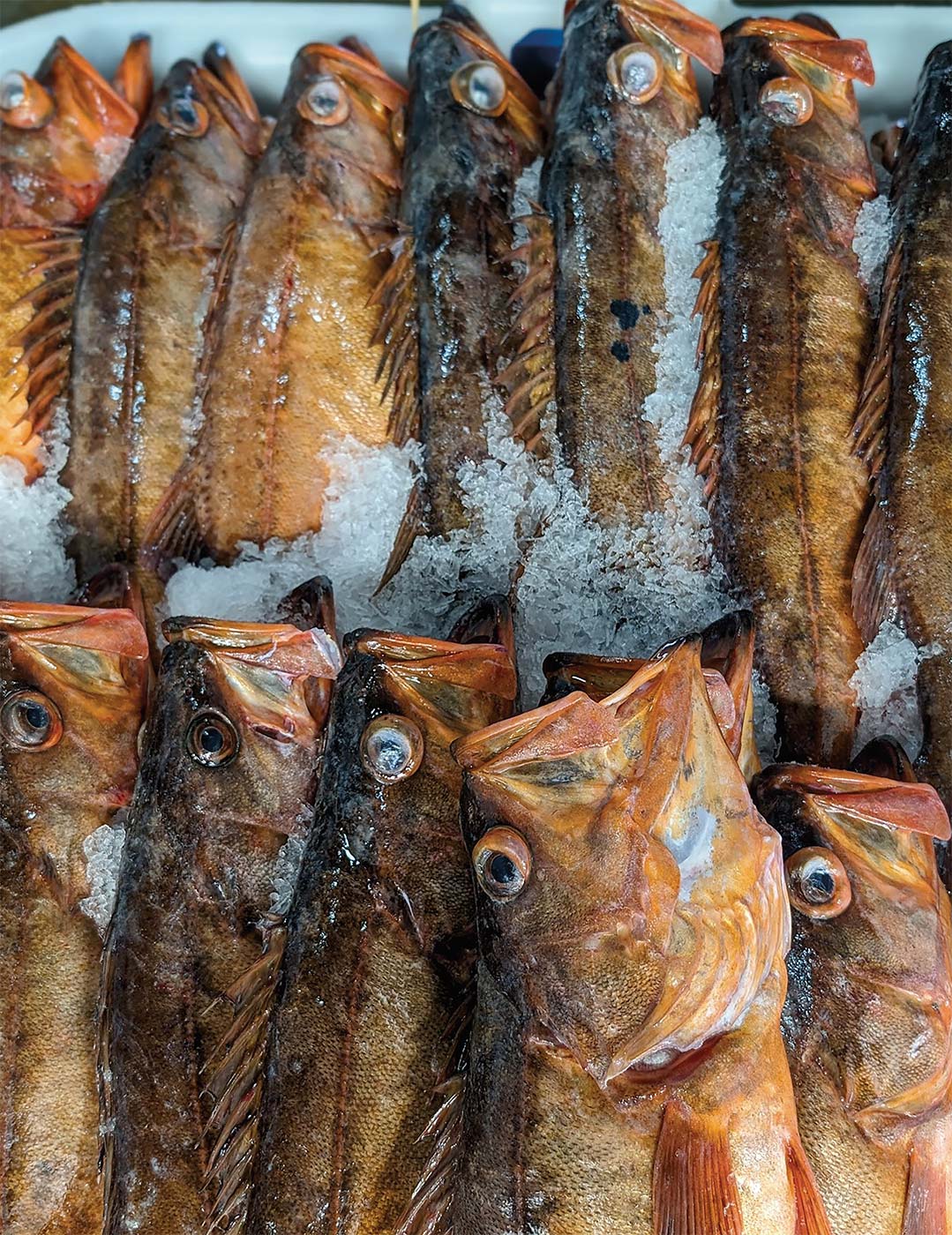
Haunting reports on the fragility of remaining local fishers
PHOTOGRAPHY BY MARK C. ANDERSON
Jerid Rold was asleep on The Aquatic, a 72-foot steel schooner his father built, when the crew landed the first catch of a two-month albacore expedition to Oregon.
“It’s my first crazy-vivid memory, waking up to fish flopping on the back deck,” he says. “I could smell it in the air.”
Rold was five at the time. He would turn six at sea.
Flash ahead a few decades, and Rold’s eldest kid, Sparrow, leads the would-be fifth generation of Rold fishers.
Like his dad, he appears young and smiling wide in photos taken aboard family boats, cradling fish as big as he is, stoked to carry on a family calling.
Only that’s no longer likely.
“I talk to my kids about fishing, about what it was like, how hard we worked, how they should appreciate the life they have today,” he says. “But I don’t try to get my kids to want to fish, and not because I don’t love fishing.”
Rold knows enthusiasm doesn’t override the undertow of challenges. In just the past year Monterey Bay fishers have endured a canceled salmon season, delayed Dungeness crab season, various ground fish closures and many other sticks in the spokes—some economic, some global, some regulatory, some oceanic and all ongoing—conspiring to make it almost oxymoronic for him to fish for a living.
So, like a growing number of fellow fishermen, he is adjusting course. Rold chose microgreens as a more mindful tack, and now grows his own Mojo brand radish, broccoli, kohlrabi, kale, cilantro and leek greens in his garage, with help from the kids.
He sells them at the Aptos and Del Monte Center farmers markets, and to restaurants like The Sardine Factory and Woodward Marine, reinvigorating relationships from his seafood-slanging days.
“It doesn’t pay like fishing,” he says. “But I’m lucky to have a wife with a good income, and this allows us to, hopefully, save our house. I feel like I’m finally building a business that can have a future.”
Rold is unafraid to wade into policy discussion, and has been calling for more responsive management decisions for decades. It’s more fun to hear him reminisce about spotting his first sharks, hunting squid by bright night lights or peering out the wheelhouse window as the rolling Aquatic leaned like a rocking chair toward the surface of the sea.
His favorite onboard activity as a kid was loading the smaller albacore he could heft, just high enough, into the conduit connecting to the fish bay below.
A generation later, many local fishers like him feel they’re heading down the chute, to a place where independently owned fishing boats become a fond but faraway memory.
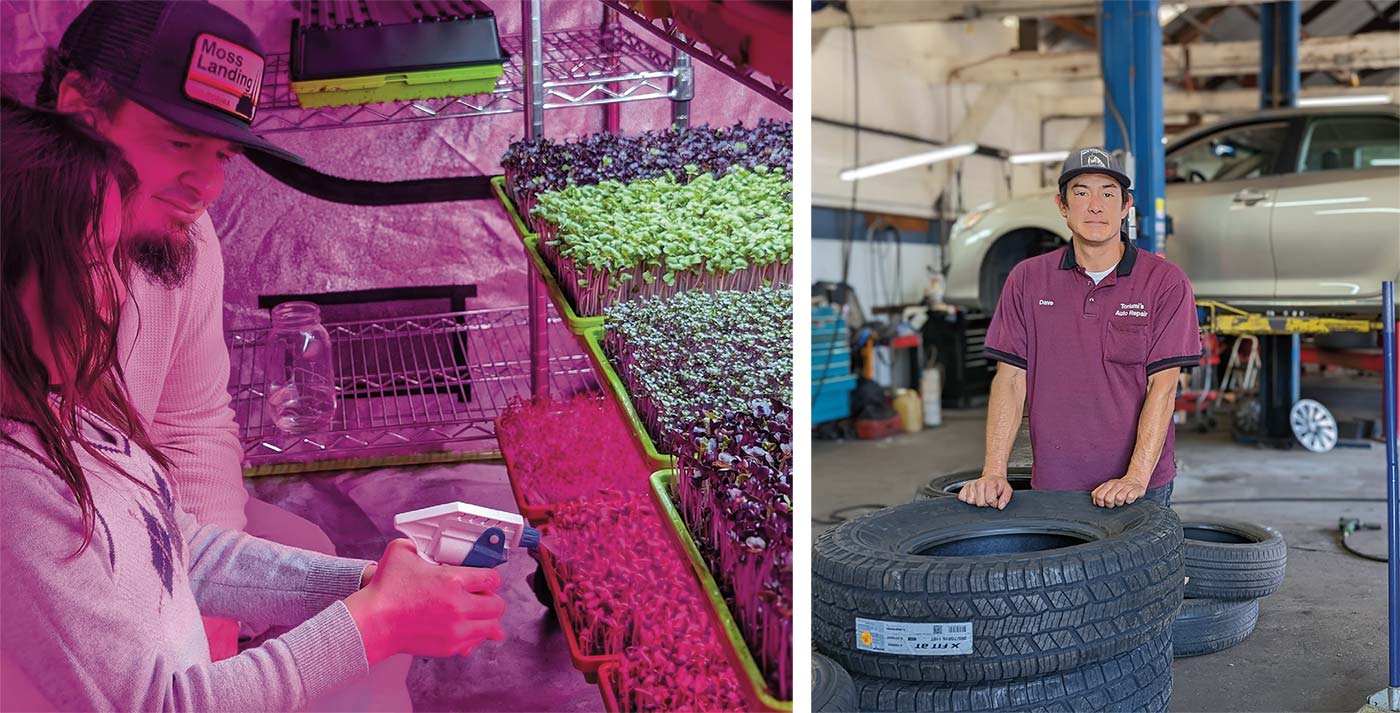
LIFE SUPPORT
This story hooked me by surprise.
I was helping local seafood subscription service Real Good Fish (RGF) and Monterey Bay Fisheries Trust (MBFT) compose profiles of their partner fishermen when RGF co-founder Alan Lovewell pointed out how quickly their lists were growing stale.
He ticked off names still visible on the respective websites and no longer active in the craft, saying something to the effect of, “He’s now a fireman, those two retired, and David’s a mechanic.” The last one landed with a thud.
David Toriumi represents the rare younger local fisherman with his own boat, and also a thoughtful voice active among solutioncentric groups like the Monterey Bay Fisheries Trust, the Monterey Bay Salmon and Trout Project, and the Pacific Fishery Management Council, sharing on-the-water insight to inform fishery decisions. Or at least he did.
“I got a lot of connection with the community through harvesting fish and crab, and engaging in policy was protecting a way of life,” Toriumi says.
I traveled to his auto repair shop in Watsonville to better understand. A few steps away from the waiting room, hung with photos of Toriumi hauling in a huge salmon, he orchestrated a thrum of activity, fielding customer calls, directing employee duties, peering under the hood of a custom Chevy Impala SS.
Toriumi’s mission ashore happened in part for personal reasons, including the sudden loss of his dad to a heart attack, which left a vacuum in the family and at the shop. But young Toriumi had pre-existing conditions his fellow fishers know well—he notes the sheer number of commercial crab and salmon permits for sale as an indicator—that led him to leap at a fresh chance for survival.
“I don’t have the [luxury] of going bankrupt,” he says.
While departures like Toriumi’s mean consumers lose some access to local protein and many fishers will struggle, plenty will find a way forward.
“When forced to leave, they’ll be successful—you can’t be a fisher without being entrepreneurial and multitalented,” Lovewell says. “You need to be adaptable. If they can’t fish, they’ll turn to the land.”
PREMATURE AUTOPSY
Throaty harrumphs of a sea lion chorus bounce off the mild morning sky above Monterey Harbor.
Jiri Nozicka stands on the wood-hulled San Giovanni, the oldest active fishing boat on Monterey Bay, unspooling a love story.
“My first time on this boat, we didn’t catch much, but we caught more than I’d ever seen,” he says. “That’s when it happened: I thought, ‘I could do this. This is beautiful.’”
The Czech native fell for the work (“There’s a very big tradition with the boat’s family and the community,” he says), then the boat (“a piece of art”), then the captain’s daughter Elizabeth. Her dad, local legend Giuseppe Pennisi, eventually turned over the San Giovanni.
Now Nozicka can’t quit fishing, despite what he calls, professionally speaking, “death by 1,000 stabs.”
Some of the daggers involve costs for boat fuel, truck fuel, life fuel, ice, maintenance, offloading fees and governmentrequired monitors that make for overhead steep enough that he does all the sales, delivery and fish processing himself.
He can’t afford much help there, even if he could make the gig steady enough to retain support.
“He doesn’t sleep much,” his eldest son Ladi says. “But he still gets so excited to go out.”
On occasion the grind means three separate trips to San Francisco in a day, wherein Nozicka rotates between his wife and sons as companions to keep him awake.
And those are only the amuse bouche obstacles, a teaser for the longer menu of tests to endure.
Those include competitive disadvantages against cheap imports and aquaculture; sale prices artificially depressed through market manipulations by powerful corporate buyers; a target audience often unaware of or unwilling to try alternatives to salmon, shrimp and tuna; threats from offshore wind development; and ever-shifting regulation to protect—in ultimately helpful ways—species like rockfish, salmon (a wildly complex conundrum on its own) and humpback whales (which shortens crab seasons and presents another decision maze).
That all grows more complicated with the ongoing chaos of warming oceans, across a Monterey Bay ecosystem defined by variability in its two foundational species, anchovies and sardines.
The difficulty drives Ocean Conservancy’s Corey Ridings, a longtime sustainable fisheries pro who serves on the Pacific Fishery Management Council, toward systemic solutions.
“We all want a silver bullet to help solve things,” she says. “But to have successful small-scale fisheries, we have to address all of those problems. It would be really nice if there was just one smoking gun we had to find. Instead we’re dealing with a many-headed hydra.”
It would be really nice if there was just one smoking gun we had to find. Instead we’re dealing with a many-headed hydra.”
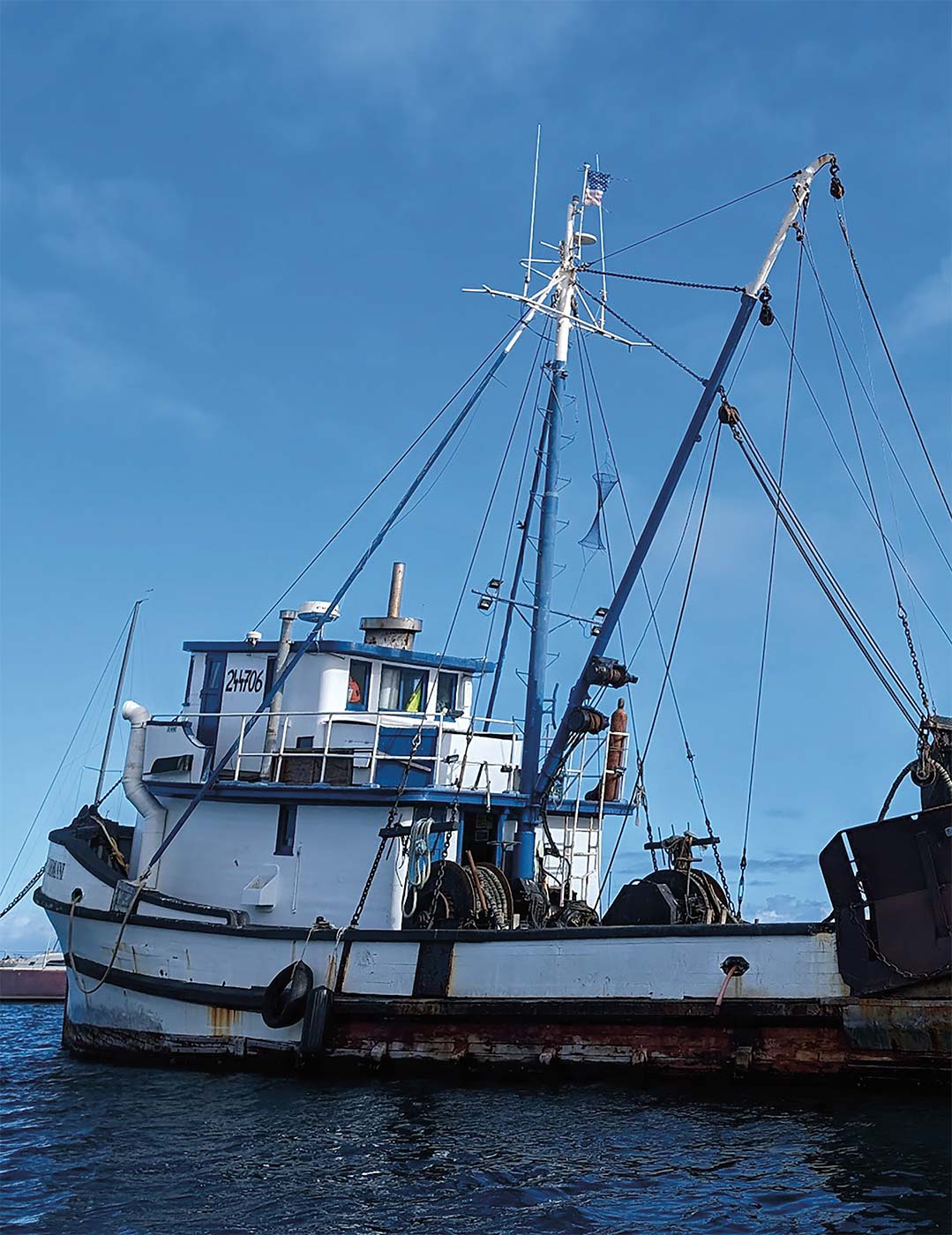
PALLIATIVE CARE
Back at the harbor, Nozicka’s gaze drifts from the vessel he’s gradually rebuilt plank by plank to the nearby docks, which are packed with sailboats and other recreational watercraft.
“When I started, 90 percent of this was fishing boats,” he says. “I speak to my oldest son about how he can grow [this business], but do I really want him to go through it? It’s almost a miracle we’re doing what we’re doing now.”
From 1980 to 2008, studies conducted by the National Marine Fisheries Service show the number of commercial vessels landing fish at Monterey Bay ports dove from more than 1,400 to fewer than 150. “Now we’re down to maybe 20 boats,” Nozicka says, a number the Fisheries Trust confirms.
Meanwhile Nozicka—who says, “I used to be the up and comer, now I’m the old guy”—epitomizes demographic data gathered from a National Oceanic and Atmospheric Administration (NOAA) survey of more than 1,400 West Coast fishers.
The latest survey found the biggest age group represented among respondents is 60–69, at more than a third. Older than 50 accounts for around 75%. Less than 3% report as 18–29 years old.
Then the kicker: More than 94%, across all age groups, report they’d rather fish than do anything else.
Nozicka used to teach an environmental economics seminar at CSU Monterey with Richard Parrish, a longtime fisheries biologist with NOAA and the National Marine Fisheries Service.
Parrish flags an additional blinking-red threat to the local fisher-person populations.
“A lot of organisms have critical habitat that’s really important to protect—birds have the Farallon Islands, for instance—for fishermen it’s marinas and shore processing facilities,” he says. “You close down too many fisheries, and all shore facilities go bankrupt. These days you can’t land fish in Monterey and get them fileted.”
Fisheries Trust Executive Director Melissa Mahoney also emphasizes industry framework.
“Once the infrastructure, fishers, the vessels, the commercial harvest go, they’re gone—and we’re effectively living that now—and then they’re very hard to get back.”
Still, if you listen closely enough, resilience remains audible in Novicka’s voice.
“We’re trying to resurrect something, and it’s not going to be a beautiful phoenix out of the ashes,” he says, a wry grin mirrored on the water. “Maybe it’ll be a little chicken that lays a few eggs.”
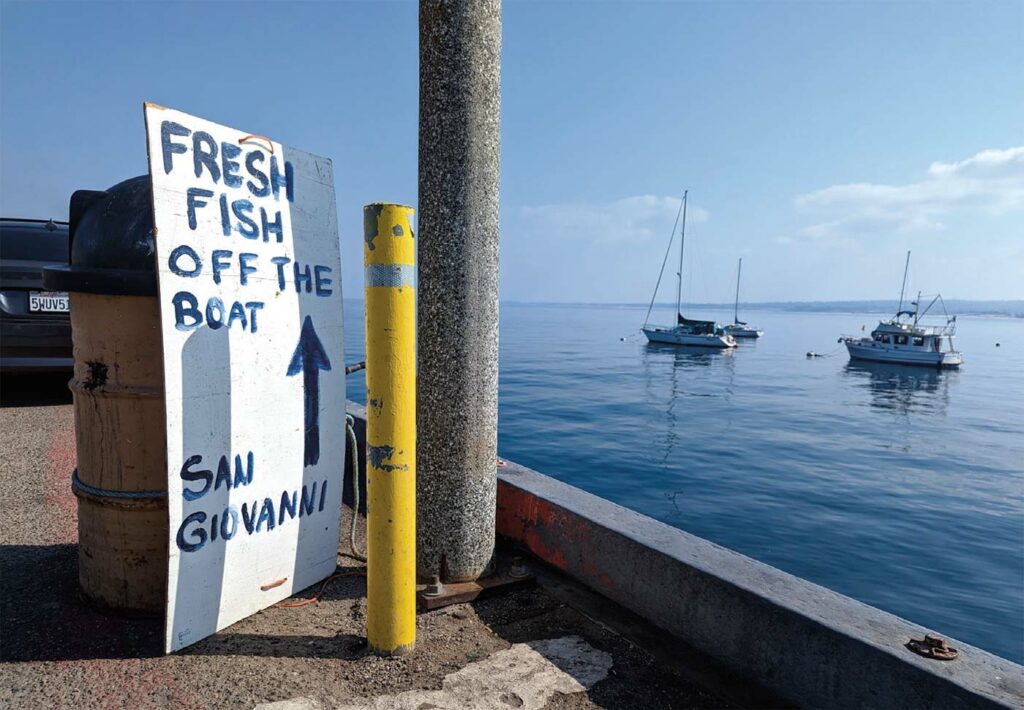
NOT DEAD YET
When I mentioned the working title of this piece (“RIP Local Fishermen”) to one West Coast fisheries expert, the source replied with an analogy.
“Is the Monterey Bay [fishery] a dying patient?” the source asked, on condition of anonymity. “If so, are we trying to make everyone comfortable, or truly trying to help the patient recover?”
Later I shared those thoughts with Mahoney, who understands the stakes, and provides perspective.
“The bottom line is people need to eat, and want great local food,” she says. “We expect government and market forces to do the things we need to maintain that access, but those things have gotten out of balance and communities need to show up.
“Current realities are not a death sentence,” she adds. “They’re a call to action.”
DETECTING A PULSE
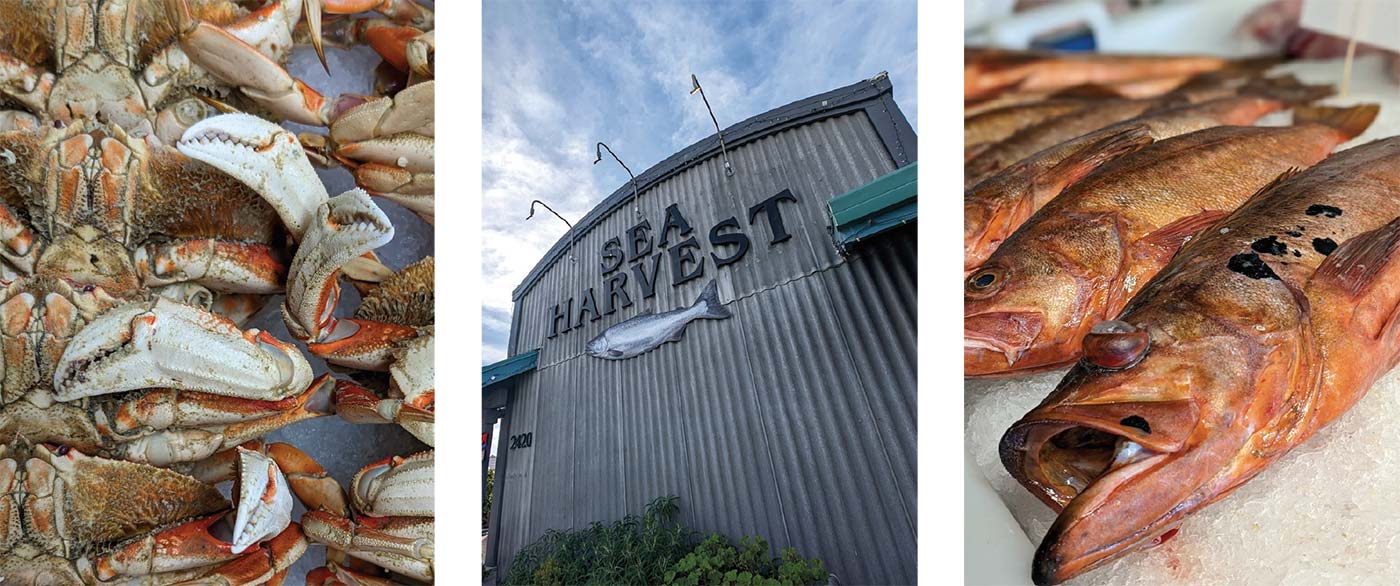
Pelicans swoop past, wings steady. Otters drift by, paws busy. A big bernadoodle and a scruffy little mutt make acquaintances, tails waggy.
Meanwhile, tourists and locals occupy picnic tables on decks overlooking Elkhorn Slough. On colorful plates appear some of the coast’s best (and most generous) Baja fish tacos, and its freshest calamari (because it’s caught and cleaned locally, unlike so much shipped to China for cheaper treatment).
The scene at Sea Harvest Fish Market & Restaurant in Moss Landing emits happiness on its surface. Beneath the surface lurks hope.
The short version of the family business: Daniel and Richard Deyerle started catching sand dabs as teens, selling them in buckets to Italian-American fishmongers, then kept fishing when they weren’t surfing.
In June 1982, those ocean-going brothers opened a modest Sea Harvest market on Foam Street in Monterey, which—with patient investments born of lucrative Alaskan expeditions—expanded to fill the building with a full-blown restaurant and bigger dreams.
“Fishing was a thriving industry in California at the time,” Daniel says. With the help of brother number three (David), the Deyerle family gradually added outposts in Carmel and Salinas, the latter of which they sold to a store manager.
Meanwhile, over time, they focused on fundamentals like boats, a processing facility and an industrial ice machine they now share with local partners in Moss Landing, for free.
Last December, the Deyerles opened their own no-frills dockside seafood shop to complement their boats, markets and restaurants, stocked with catch from their own team.
“It doesn’t get fresher than that,” third-generation fisher Walter Deyerle, Richard’s son and captain of the F/V Sea Harvest IV, said when it opened. “Today I put fish in the bins still flopping.”
On a January visit, these ice bins present fresh sea scallops, black cod, rock cod, whole long spine thorny heads, Dungeness crab and hand-prepped calamari, all adjoining a cavernous processing bay and industrial size walk-in refrigerators as big as racquetball courts.
Walter knows the family can’t compete with low prices from giant operations enjoying contracts with big supermarket chains. But they can have fresher product handled by longtime staffers for a comparable price, in house.
As this goes to press, Moss Landing market manager Andrés Jacobo just started circulating a direct-to-consumer messaging service, alerting consumers to the incoming haul via text.
Adaptations like that—and fisher-driven dockside sales—are crucial.
“One of the things I find hopeful is that I’m seeing real willingness and interest in finding new ways to sell fish and engage with consumers— and the regulatory process too,” says NOAA economist Cameron Speir.
“To see the real enthusiasm to move the industry forward bodes well.” Simplifying the supply chain works as the operating ethos for community supported fisheries like Real Good Fish and Ocean2Table, and area markets like Sea Harvest and H&H Fresh Fish Co. next to the Santa Cruz Harbor.
“I believe in the ocean’s ability to feed people, and a lot of them, with a lot of healthy food that’s more sustainable than most on the planet,” Real Good Fish’s Lovewell says, “I believe people have an inherent connection to the ocean. It’s there for us. It provides. We just need to take care of it.”
Local fresh fish subscriptions invite a willingness to eat with seasonality and adventure, an approach the Monterey Bay Fisheries Trust also elevates.
Its website provides a reservoir of resources on which local species merit attention, how to find them and ways to prepare them, alongside updates on trends, rules and realities facing local fishers and the area’s marine ecosystem.
When it comes to realities—then and now—Daniel Deyerle offers a closing note.
“We started fishing so we didn’t have to work for anyone, you know, go surfing in Baja, have an adventurous life,” he says. “But we ended up working harder and longer than anyone. So I don’t know what the trade-off is.”
About the author
Mark C. Anderson, Edible Monterey Bay's managing editor, appears on "Friday Found Treasures" via KRML 94.7 every week, a little after 12pm noon. Reach him via mark@ediblemontereybay.com.
- Mark C. Andersonhttps://www.ediblemontereybay.com/author/markcanderson/
- Mark C. Andersonhttps://www.ediblemontereybay.com/author/markcanderson/
- Mark C. Andersonhttps://www.ediblemontereybay.com/author/markcanderson/
- Mark C. Andersonhttps://www.ediblemontereybay.com/author/markcanderson/


